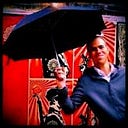In a recent post, I blogged about what scenarios we had imagined for a post-Brexit future and how relevant these may be for a post-Covid 19 future.
Scenarios however can feel very contrived, because they are designed with the lenses of how we currently see the world, which is why most scenarios pre-Covid 19 wouldn’t consider a pandemic as a scenario, either because it was so unlikely or because other trends felt more significant, be it automation or climate change. The way many scenarios are designed also feel too rational, like they can actually predict the future, whereas that shouldn’t be their pretence, it should be to open people’s imagination to what the future could be and how they could make it happen.
“The best stories offer a mix of dystopia to bring to life in a very sharp way the issues that should keep us up at night, the utopias that help us dream better tomorrows and want to find ways through issues that feel too complex and deep-rooted, and practical ways forward that provide us with the tools we can start using now to “practice” making the future happen.”
You can’t develop future policies or practices if you don’t create the space for imagination. But you can’t just imagine those futures, you need to start enacting them so people can see what they might look like and then adjust & challenge them. And there are futures where you need systemic change that you can’t create just by practising it, you need to mobilise people to demand better futures. This reminded me of using scenarios to help people imagine new ways that young people could make a living
We should think of that when imagining what a post Covid future would look like.
How can we use creative methods to imagine new ways of tackling the post Covid 19 world? If working with community organisers, entrepreneurs or data scientists is changing the way we work, how might government change if we worked more closely with cartoonists, games designers, dancers…or pirates? None of these forms of art have waited to bring the political into their work, whether it’s Molly Crabapple visualising the future with a Green New Deal, World without Oil, or Capoeira.
As Noah Rayford suggests in States of Change How not to waste a crisis — playing with the future, “It’s the job of the futurist to make the strange familiar and the familiar strange”.
NESTA recently described different types of participatory futures approaches allowing people to place themselves in a future world and experiment with new values or behaviours. NESTA has itself created Our Futures, a game to invent new ways of engaging the public to tackle 21st century challenges.
Early Days of a Better Nation, for example, transported people to a fictional post-collapse state and charged them with rebuilding it anew. This challenged people to explore questions of purpose, values and vision. How might we do to help people through Covid 19?
The three horizons framework is a helpful way to help people think about the different futures in a way that acknowledges people’s fears about a more radical or dystopian future, people’s nervousness of not creating a future that preserves the status quo where there are things to be reinvented and to plot how the future might evolve:
What are we doing?
We want to develop an understanding of the macro trends that are emerging or accelerating as a result of Covid 19 in our area
We then want to be able to test our current approaches against the potential future trends to determine how we adapt our framework & strategy.
To do this, we’re carrying out work to:
- Map the political, economic, social, technology & cultural trends at a macro level for our area
- Map the drivers shaping the future policy environment
- Identify the critical uncertainties
- Develop scenarios that help explore the different conditions for the future
- Develop a methodology to help stress test our work against the scenarios
We want to understand what ways of working used in Covid 19 could be adapted, embedded or scaled to help the organisation move from emergency to recovery to renewal.
To do this, we’re:
- Assessing new ways of prototyping policy, services, behaviours & infrastructure to recover, reinvent & renew
- Assessing creative ways that can involve staff, partners & residents in the prototyping highlighted above
- Assessing lessons learned from staff, residents & partners on the current situation and identification of opportunities for the organisation to improve
- Helping prototype ways to recover, reinvent & renew in a manner that embodies our values, recognises the challenges & opportunities of the current situation and can flex to changes in the external environment
